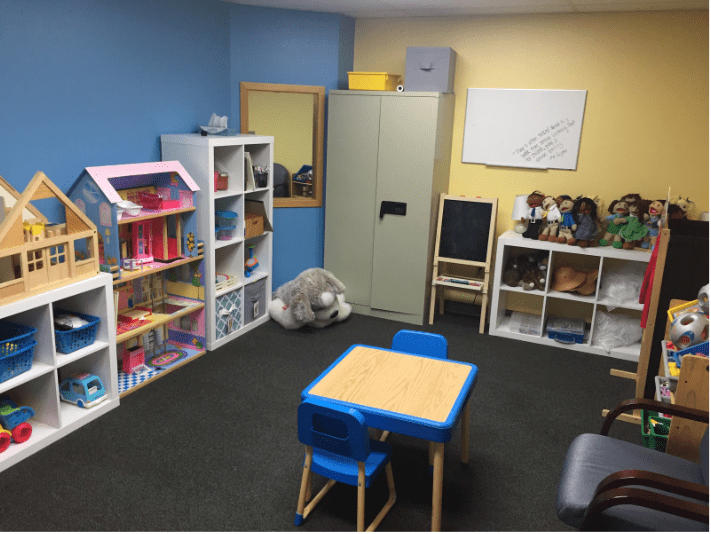Helping Children by Using Their Language
Play is the natural language of children.
Young children learn exceptionally fast through observation and interaction. They acquire language by engaging with adults and children before they can speak. Play, however, isn’t learned; children are hard-wired for play.
Play is exploration and fun. It’s how children learn about themselves and build relationships. Play can also be purposeful and therapeutic. That’s where Annie Gabriel comes in. Annie is a Registered Play Therapist for LCS Northwest in the Tri-Cities. Play therapy sounds like fun, but the goals are as serious as any other type of mental health therapy.
Play therapy allows children to express feelings, communicate needs, and develop problem-solving skills needed to face real-life challenges, but at a safe distance.
“When children are given the tools and the opportunity, they know how to get to work,” Annie says. “Play therapy is especially important because the younger people are when they work through trauma, the less impact that trauma will have on the rest of their lives.”
Annie works in a Play Therapy room where “toys are selected, not collected.” Children often need no prompting, but immediately engage and begin playing out whatever they need to process. Annie’s job is to speak in the child’s language and to listen.
“I’m there to help the child feel seen and known; to bear witness to their process like a giant mirror,” Annie said.
By reflecting back to a child what she is seeing, the child learns to name feelings and connect them to events. Play allows a child to control the narrative and change the outcome.
Sometimes a child will play out the same narrative over and over again. At a previous job, Annie worked with a young boy after the Boston Marathon bombing*. He would play “cat and mouse” repeatedly. The child was processing the manhunt for the brothers responsible for the bombing, which took place in his Cambridge neighborhood. Then one day, the child moved on to a new play narrative. For him, the issue was resolved.
“Kids know how to heal themselves,” Annie said. “He addressed good versus evil, safety, justice, and his emotions in one simple game.”

This is a typical play therapy room, where toys are selected for each child. It’s important that the room looks the same every time to create a predictable experience for the child so they can continue from where a previous session left off. This also creates a layer of safety and control for them.
Play therapy allows children to develop strategies to help them process and manage their world. The resiliency of children and the flexibility of their brains to adapt and change means that early intervention leads to better lifelong outcomes.
*Note: the details about the youth and their play narrative were changed to protect the identity of the child

0 Comments